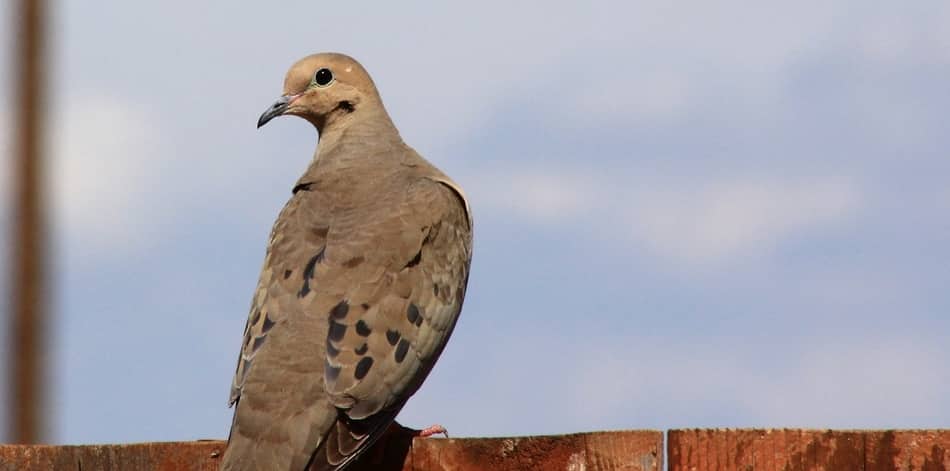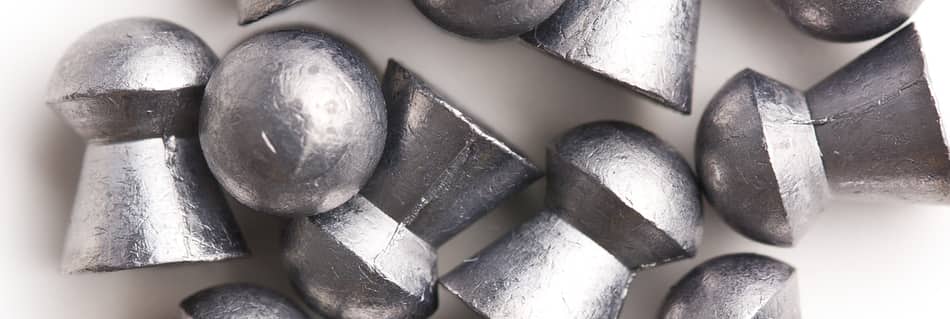
If you are looking into getting an airgun for nailing those pesky pigeons invading your crop land, we have you covered.
If cost is not an issue, then a PCP like the Umarex Gauntlet will be ideal; if cost is an issue, then an airgun like the Gamo Swarm will be great as well. An airgun able to fire about 850 fps will be best, and something that would be quick to reload would make hunting nice as well.
We’ll dive into some of the reasons why certain things are desirable for birds and why some things are not, so kick back, grab your favorite drink, and get ready to go to town on them birds.
What is Ideal in an Airgun for Birds?

Airguns are great for a few reasons when hunting birds. While they don’t make it as easy to go bird hunting as a shotgun sometimes does, an airgun that shoots at least 850 fps is ideal. In fact, 850 fps is the best muzzle velocity for accuracy.
It seems kind of counter intuitive, but if you go too fast, your pellet actually loses accuracy. This is a thing because of how the air around us reacts to things moving really fast.
The atmosphere is kind of like a swirling, chaotic spring that pushes back when we move relative to it. The faster that you travel, the more you compress that spring, and the more it fights back.
This is pretty much unnoticeable at the speeds that humans normally travel at, but as a pellet reaches the speed of sound, the spring gets exponentially tighter and tighter, and the wall gets exponentially thicker and thicker.
As this air that the pellet compresses in front of it seeks to expand back out to normal, it swirls and moves the pellet around, throwing off its accuracy. This is usually not incredibly noticeable at short ranges, but becomes more pronounced the further out that it goes.
This wall reaches peak strength at about 1050 fps, the approximate speed of sound. If the pellet were to outrun this wall, it would be okay, but that becomes impractical in an airgun, while being something that a firearm achieves without effort.
Because of this, when you invest in an airgun for any reason that needs accuracy, you should hesitate to get something that can work at a speed that is just too fast. Often when an airgun will advertise its speed, that muzzle velocity is inaccurate, and that will be for a number of reasons.
Airguns do not have set muzzle velocities, but they do have set muzzle energies. They will put out almost the exact same amount of kinetic energy every time, making heavier pellets have less speed, but an equal amount of energy, while a lighter pellet will have much more speed.
That is sometimes how a manufacturer will get those higher advertising speeds, by using a much lighter pellet in an airgun, boosting the velocity without boosting the power of the airgun.
When you look into what you want, if you can use a chronometer with the pellet that you will be using the most, that will give you the best reading, or you can try to find a review where someone did use a chronometer to find the speed that it works at.
If you can find something that will consistently work at about 900 fps, that will work.
You do want to make sure that the gun you choose has enough power to put a bird down when you hit it. Hitting the thing and not killing it is what some might call rude, and being rude to animals is frowned upon in the hunting world.
For example, if you were to go hunting pigeons, then you would want a gun that will give your pellet about three ft lbs of energy (also noted as fpe) at three fpe, you will be able to consistently kill a pigeon quickly if you land your pellet in the lethal zone.
A gun with that amount of energy would have to send a 7.87 grain pellet at about 425 fps. 7.87 grains is actually kind of light for a pellet, or at least you won’t find many more lead pellets that are lighter than that, and 425 fps is half of what you would want for your ideal pellet speed.
So if I’ve done my math right, you should have no issue finding an airgun that will be at our ideal pellet speed that has enough energy to dispatch a bird. In fact, because of this equation: KE=1/2m*v^2 where kinetic energy equal to half of the mass of your pellet times your pellet’s speed multiplied by itself, your pellet gets exponentially more powerful the faster it goes.
So a pellet with 7.87 grains that goes at 850 fps does not have double the kinetic energy, it has four times the kinetic energy, giving it about 12.6 fpe, four times the energy it needs to humanely put down a pigeon. So again, power should not be an issue unless you are using something like a Red Ryder BB gun.
Choosing a gun that you can be consistently accurate with will also be huge, as it does you no good to finely tune your muzzle velocity, or choosing an airgun with just the right amount of power if you cannot hit the thing.
Most airguns intended for hunting are made with this in mind, so you should not have to worry to terribly much, but if you are wondering what your effective range is with the airgun, this might help.
Take a quarter and trace its outline on a target. Go out to 25 yards and put a group in it. If you can get the group to consistently be inside of that quarter, then repeat at 30 yards, and if you can still keep it inside of that quarter, then back up again. Repeat this until you cannot get the group inside of your quarter, and just under that is your effective range.
This is because the lethal zone on a pigeon (and most similarly sized animals) is about the size of a quarter. If you hit the animal outside of that quarter sized knot of vital organs, you may still kill the animal, but it will be a much more painful and slow death for the fowl.
If you get the chance to try this out at a range, you may be able to try out a gun and see how you like it before you make your purchase.
Quickly getting off shots would be nice, but is not always necessary depending on your shooting environment. If you are just picking off lone birds on a tree, it might not be as necessary to have a magazine. If you are taking as many as you can out of a field full of them, a quick reload and follow up shot may be nice before they swarm.
We recommended the Umarex Gauntlet and the Gamo Swarm
and the Gamo Swarm because of these reasons. In our testing, both guns shot at the speeds that were ideal with an 8.44 grain pellet, both had the capacity for a single shot or to use a magazine, and we were able to get quarter sized groups at just about 50 yards with them.
because of these reasons. In our testing, both guns shot at the speeds that were ideal with an 8.44 grain pellet, both had the capacity for a single shot or to use a magazine, and we were able to get quarter sized groups at just about 50 yards with them.

What is the Best Pellet for Birds?

Every pellet is different, and every gun will react differently to each pellet. This is for a number of reasons, like slightly different shape, slightly different weight, and so on– but the universally accepted all around good quality pellet is the standard domed diabolo, like these pellets by JSB and H&N
and H&N .
.
The reasons for this are multiple, and that does not necessarily mean that you will not find a pellet that is more accurate for your gun than these, but they are able to deform well enough in a target without sacrificing any of the aerodynamics that make them accurate.
The domed head is the right shape that it will slough off any air in its way, while also having a blunt enough head to catch the flesh of a target and deform. Other pellets are designed to deform in more spectacular fashion, like a hollow point, or some with a cross shaped groove in their front, allowing them to dump more energy more quickly into their target.
These other kinds of pellets will kill the target more effeciently if you are able to land a hit with them, but they can negatively affect your accuracy, as the face of it is not as aerodynamic as your standard domed pellets are.
So if you opt for the pellet designed to deform more in a target then you should run through that quarter test again to find your accurate range with the thing.
Many pellet makers offer hunting samplers for you, so you can spend a few dollars to get a small amount of a wide variety of pellets that will let you find the best pellet for you and your gun without spending money on an entire tin that you will never use again.
Can a BB Gun be Used to Kill a Bird?
Most BB guns do not have enough power to humanely dispatch a bird. The higher end for a BB gun in terms of power is about 4 fpe, which if you’ve been paying attention is just above what you need to be humane with a bird.
Now, that means that a more powerful BB gun can kill a bird, but is also means that most cannot. Take for instance the Daisy Buck, which we enjoy shooting here at Airgun Ace. It shoots a 5.1 grain BB at about 235 fps, coming out to be about 0.62 fpe. That is probably enough to seriously injure your quarry, but not enough to be humane.
The Crosman Recruit (a multi pump) is a BB gun that would be able to get the energy and speeds that you need, but it would take at least 7 pumps to do so, and at 7 it would have just enough energy to do so.
(a multi pump) is a BB gun that would be able to get the energy and speeds that you need, but it would take at least 7 pumps to do so, and at 7 it would have just enough energy to do so.
If you are interested in getting those birds out of the sky, this is probably not the way to go.
